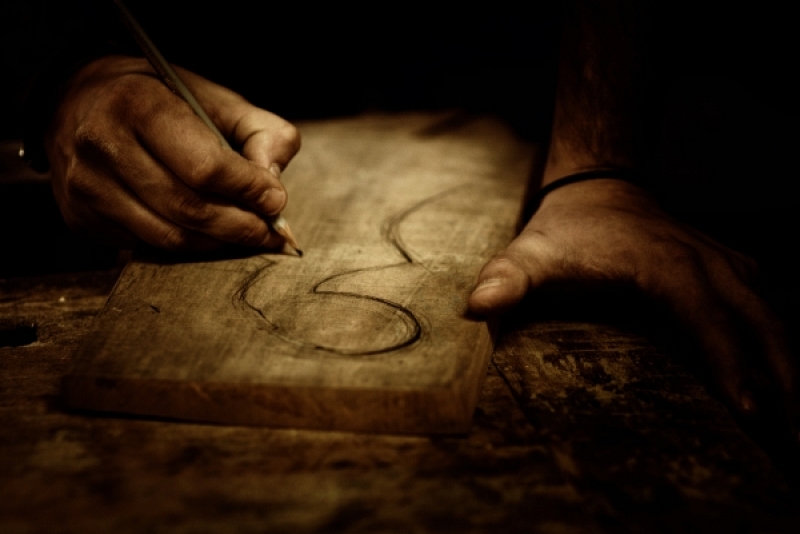The best of "The secret of crafts"
58 photos form the final selection
TODOR RUSINOV - HANDS OF THE CREATOR FIRST
PRIZE
In the traditional notions of Bulgaria and the other Balkan and Slav peoples crafts are not just skill but particular symbolic and spiritual dimension. The Master has the ability to create and in his work he repeats the sacred acts of God. Perhaps the real secret of the craft lies precisely in the power of people to create harmony and beauty which transforms the amorphous material into an object or a piece of art.
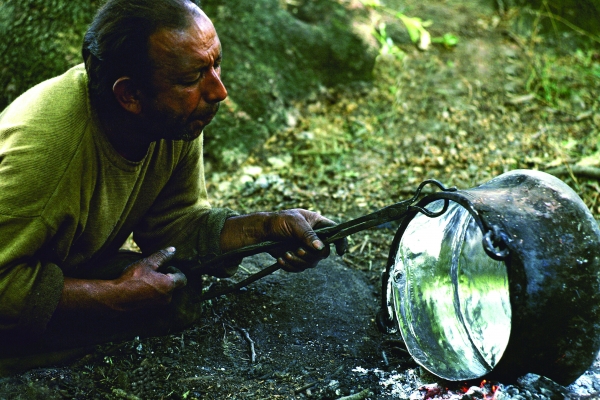
Tinker around Sandanski
NIKOLAI VASILEV -TINKER SECOND PRIZE
In the traditional household of Bulgaria and the other Balkan and Slav peoples crafts are not just skill, but are particularly symbolic and spiritual dimension. The master has the ability to create and in his work repeats the sacred act of God. Perhaps the real secret of the craft lies precisely in the power of people to create harmony and beauty which transforms the amorphous material into a piece of art.
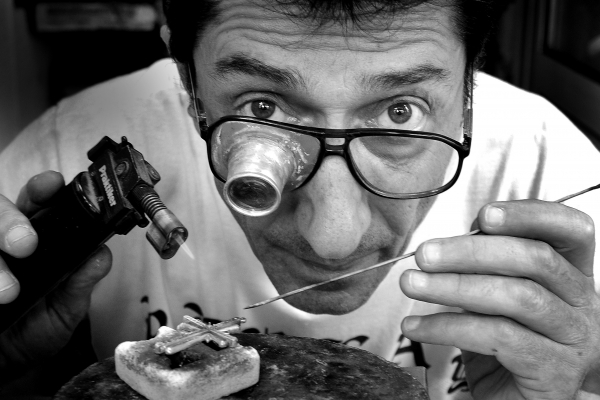
STOYAN ILIEV - JEWELRY - THIRD PRIZE
The production of silver jewelry from thin filaments known as filigree is an old traditional technology that modern masters preserve and develop with love, sensitivity and creativity.
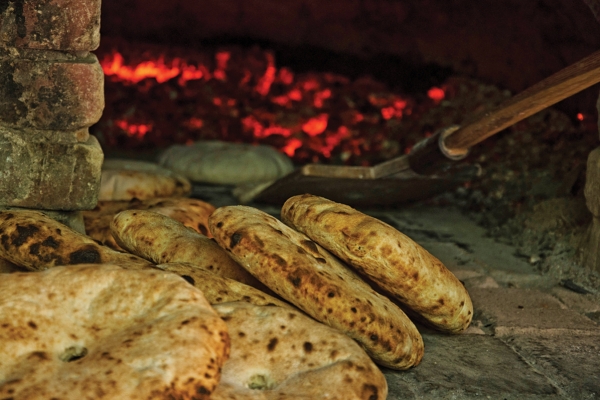
DIANA DIMITROVA - NO ONE IS BIGGER THAN BREAD
In a traditional rural home each housewife prepares her own bread - the staples of everyday life of the Bulgarians. It was not until the Renaissance and mainly in the cities that appeared the first bakeries. Today the fragrant, freshly baked and manual made bread is a luxury that not everyone can afford.
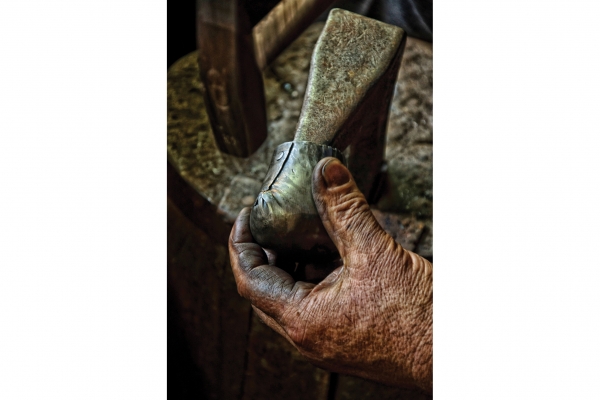
In the ethnographic museum complex near Gabrovo.
DIANA DIMITROVA - COW-BELL MAKING
Making of bells and chimes is directly related to livestock, mostly shepherding. In addition to protecting animals from loss, bells have aesthetic function - their harmonized "voices" are joy for the ear. Nice and loud bells, as well as the nice flock are a reason for pride and a sign of prestige for еvery well off sheep-breeder.
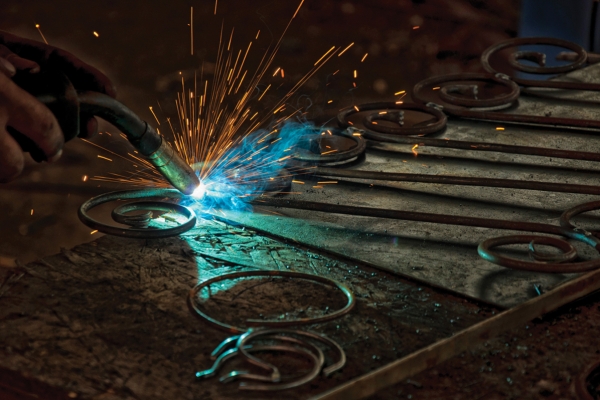
DIANA DIMITROVA - BLACKSMITH
Blacksmiths nowadays develop traditional craft by using advanced locksmith tools, such as oxygen. Thus they make decorative metal grilles, fences of rolled iron. In the hands of a good master even the strongest metal will bend.
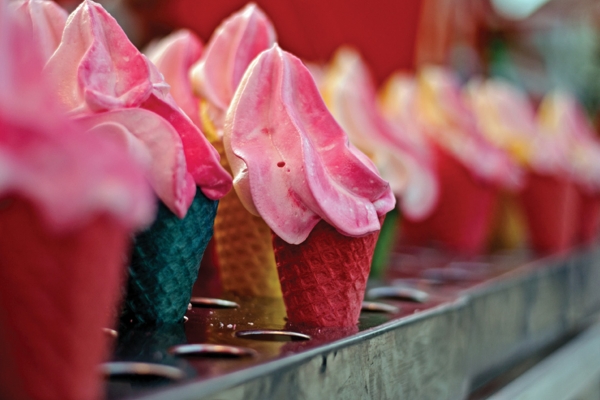
from Kavarna
EVGENI GENCHEV - PINK MEMORIES
Specific piece of candy craft - the cones filled with sweet pink cream of beaten eggs. Just like like the cotton candy they invoke memories of childhood, showy stalls, village fairs, circus and fun-fair.
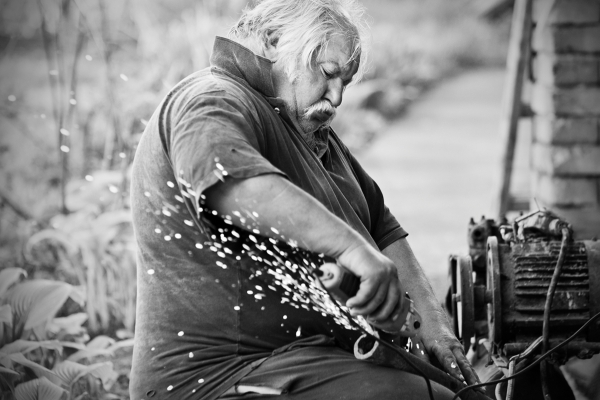
NIKOLAI DIMITROV - COMMITMENT
Thephoto shows the work of a locksmith who forms the metal with an angle grinder. This work required skills, physical strength and dedication to the craft. It takes concentration because even the slightest distraction can cost you much.
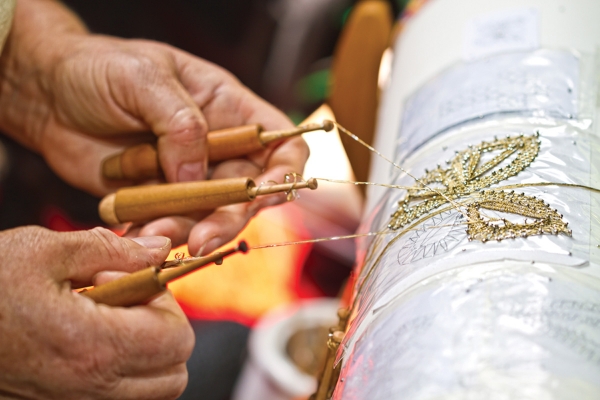
In the traditional notions of Bulgaria and the other Balkan and Slav peoples crafts are not just skill but particular symbolic and spiritual dimension. The Master has the ability to create and in his work he repeats the sacred acts of God. Perhaps the real secret of the craft lies precisely in the power of people to create harmony and beauty which transforms the amorphous material into an object or a piece of art.

Tinker around Sandanski
NIKOLAI VASILEV -TINKER SECOND PRIZE
In the traditional household of Bulgaria and the other Balkan and Slav peoples crafts are not just skill, but are particularly symbolic and spiritual dimension. The master has the ability to create and in his work repeats the sacred act of God. Perhaps the real secret of the craft lies precisely in the power of people to create harmony and beauty which transforms the amorphous material into a piece of art.

STOYAN ILIEV - JEWELRY - THIRD PRIZE
The production of silver jewelry from thin filaments known as filigree is an old traditional technology that modern masters preserve and develop with love, sensitivity and creativity.

DIANA DIMITROVA - NO ONE IS BIGGER THAN BREAD
In a traditional rural home each housewife prepares her own bread - the staples of everyday life of the Bulgarians. It was not until the Renaissance and mainly in the cities that appeared the first bakeries. Today the fragrant, freshly baked and manual made bread is a luxury that not everyone can afford.

In the ethnographic museum complex near Gabrovo.
DIANA DIMITROVA - COW-BELL MAKING
Making of bells and chimes is directly related to livestock, mostly shepherding. In addition to protecting animals from loss, bells have aesthetic function - their harmonized "voices" are joy for the ear. Nice and loud bells, as well as the nice flock are a reason for pride and a sign of prestige for еvery well off sheep-breeder.

DIANA DIMITROVA - BLACKSMITH
Blacksmiths nowadays develop traditional craft by using advanced locksmith tools, such as oxygen. Thus they make decorative metal grilles, fences of rolled iron. In the hands of a good master even the strongest metal will bend.

from Kavarna
EVGENI GENCHEV - PINK MEMORIES
Specific piece of candy craft - the cones filled with sweet pink cream of beaten eggs. Just like like the cotton candy they invoke memories of childhood, showy stalls, village fairs, circus and fun-fair.

NIKOLAI DIMITROV - COMMITMENT
Thephoto shows the work of a locksmith who forms the metal with an angle grinder. This work required skills, physical strength and dedication to the craft. It takes concentration because even the slightest distraction can cost you much.

JORDAN RUSEV - THE LACE OF KALOFER
The hometown of Hristo Botev is famous also for its lace, known not only in Bulgaria but around the world too as "the white magic of Kalofer." In the early twentieth century a local woman attends a course for production of Brussels lace in Sofia and thus brings the European tradition in Kalofer. There the lace is enriched with specific Bulgarian motives and gets its characteristic style. In more recent times the residents of Kalofer celebrate a special Lace day on August 15 (on that day we also celebrate the christian holiday - Assumption).
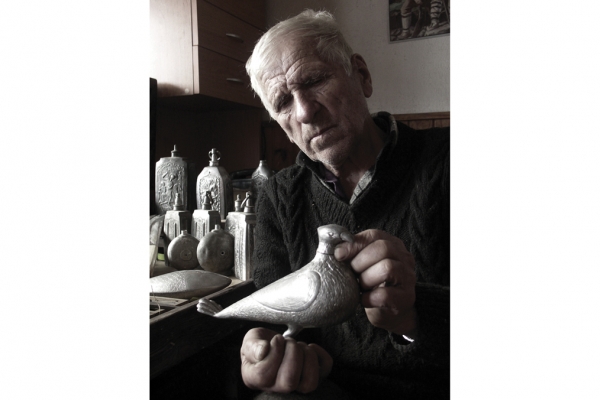
Master Dyanko Djankov - gunsmith
TSVETAN MARINOV- PAVURI
The photo shows a master of tin pavuri - traditional vessels for transporting wine, brandy and incense. They are made first by casting the metal and then by hammering and engraving. Covered with rich embossed ornamentation and often decorate with images of saints such as the favorite character St. George, who defeated the dragon.
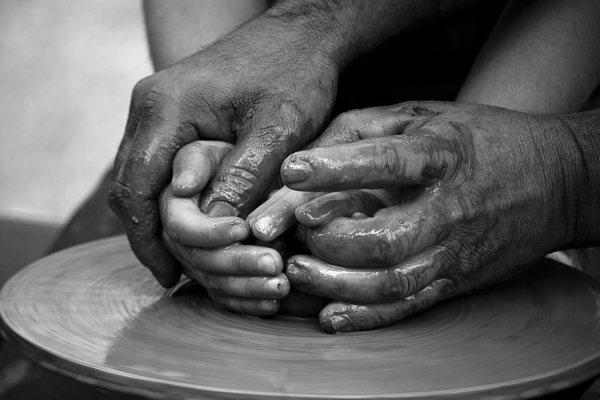
EMIL DIMITROV - CATCHING THE CRAFT
Unlike modern professions, traditional crafts are not mastered by special education. Knowledge is transmitted from person to person through observation, imitation and direct experience. It is important to have a good teacher to introduce the novice to the intricacies of the craft. There's another common idea too: that the craft is not given, but "stollen" - the student should have the ability and talent to "catch" the secret from his master.
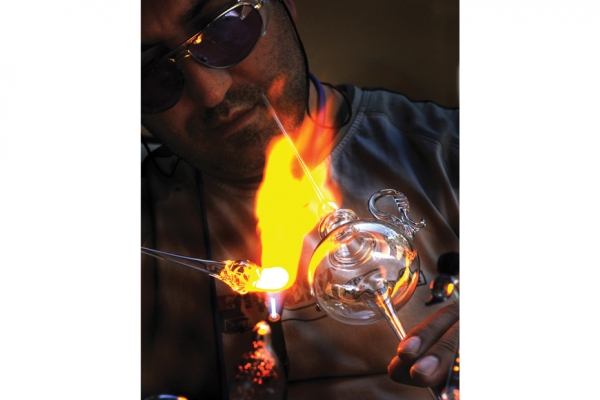
STOYAN ILIEV - GLASSWARE
Glass is heated to a high temperature to aquire the density of the dough and become tractable. Blowing through a special tube and using molds, the master forms the object in the desired way and then he put the parts together. Thus are made the thin wall glasses like bowls, figurines and Christmas toys.
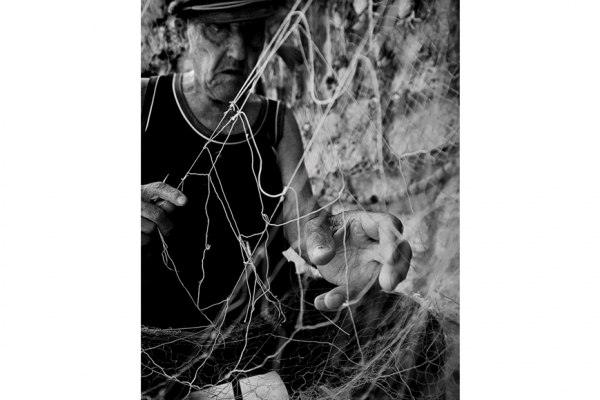
The hometown of Hristo Botev is famous also for its lace, known not only in Bulgaria but around the world too as "the white magic of Kalofer." In the early twentieth century a local woman attends a course for production of Brussels lace in Sofia and thus brings the European tradition in Kalofer. There the lace is enriched with specific Bulgarian motives and gets its characteristic style. In more recent times the residents of Kalofer celebrate a special Lace day on August 15 (on that day we also celebrate the christian holiday - Assumption).

Master Dyanko Djankov - gunsmith
TSVETAN MARINOV- PAVURI
The photo shows a master of tin pavuri - traditional vessels for transporting wine, brandy and incense. They are made first by casting the metal and then by hammering and engraving. Covered with rich embossed ornamentation and often decorate with images of saints such as the favorite character St. George, who defeated the dragon.

EMIL DIMITROV - CATCHING THE CRAFT
Unlike modern professions, traditional crafts are not mastered by special education. Knowledge is transmitted from person to person through observation, imitation and direct experience. It is important to have a good teacher to introduce the novice to the intricacies of the craft. There's another common idea too: that the craft is not given, but "stollen" - the student should have the ability and talent to "catch" the secret from his master.

STOYAN ILIEV - GLASSWARE
Glass is heated to a high temperature to aquire the density of the dough and become tractable. Blowing through a special tube and using molds, the master forms the object in the desired way and then he put the parts together. Thus are made the thin wall glasses like bowls, figurines and Christmas toys.

from Neseber
ANGELINA SHISHMANIDOVA - THE OLD FISHERMAN
The net is the main tool of the fishermen along our coast and major rivers. Therefore it is important to keep it in good shape. When on shore, the fisherman takes care to sew regularly the net with a special wooden needle and prepare it for the next catch.
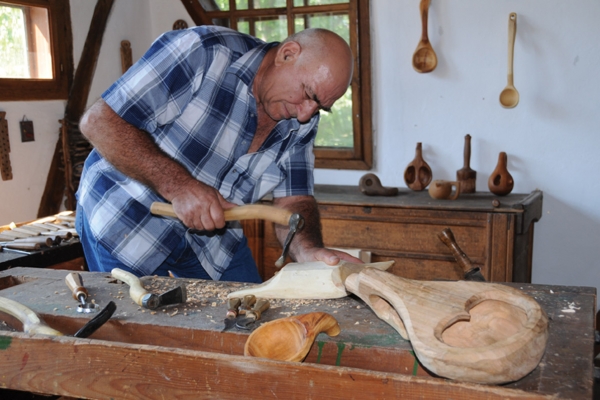
Master George Mitsovski - kopanichar
TSVETAN MARINOV - KOPANICHAR
Whittler's Craft or Kopanarstvo is the process of producing household objects from wood - bowls, spoons, kneading, spindles and more. The most commonly used soft and susceptible trees are: poplar, aspen, willow, beech. It takes a simple straight blade or folding one, chisels and special adzes. The skill lies in the ability to "pull" out of the wood the form that is hidden within, i.e. to use its natural patterns and distinctive texture and turn its weaknesses into strengths.
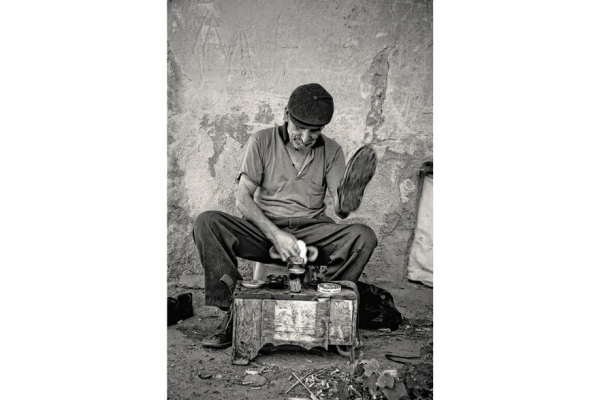
GERGANA VELEVA - BOOTBLACK
Bootblack is "modern" profession that appeared in the bigger Bulgarian cities with the advent of the European fashion. With its specially decorated boxes and colorful behavior bootblacks add to the attractive urban landscape. They are even present in the urban folklore and songs .
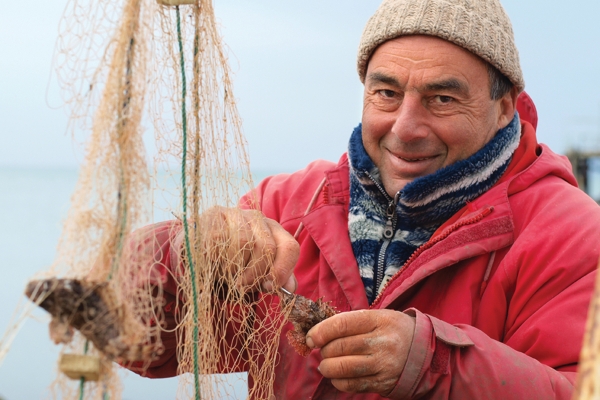
fisherman from Balchik
DILYANA STOYCHEVA - CATCH
A happy fisherman carefully released the catch net. In the traditional culture the fisherman is a symbolic figure: Christ and his disciples - apostles, some of which are also fishermen, are presented as "fishers of men." In more sentimental-romantic plan the fisherman is present in urban songs too: "Tell me, tell my poor fisherman, / Can you do the knitting / and in your nets , my poor fisherman, / get my heart entangled?"
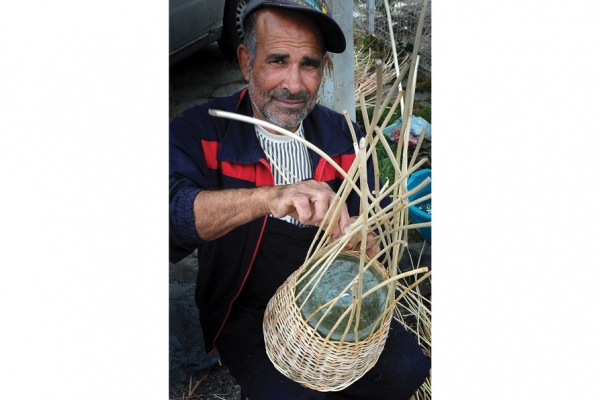
Adult man who exercises his craft on the street
STOYAN ILIEV- KNITTER OF DEMIJOHN
The entanglement of particular "cases" of wicker (a type of shrub willow) is the skill of wickermakers. Those strong cases protect the glass from breaking. A handle is attached. Sometimes pre-colored stems are used which makes the jug not only comfortable, but also pleasing to the eye. In more recent times, along with the natural materials some plastic strips or wires are also used but that is more or less considered kitsch.
The net is the main tool of the fishermen along our coast and major rivers. Therefore it is important to keep it in good shape. When on shore, the fisherman takes care to sew regularly the net with a special wooden needle and prepare it for the next catch.

Master George Mitsovski - kopanichar
TSVETAN MARINOV - KOPANICHAR
Whittler's Craft or Kopanarstvo is the process of producing household objects from wood - bowls, spoons, kneading, spindles and more. The most commonly used soft and susceptible trees are: poplar, aspen, willow, beech. It takes a simple straight blade or folding one, chisels and special adzes. The skill lies in the ability to "pull" out of the wood the form that is hidden within, i.e. to use its natural patterns and distinctive texture and turn its weaknesses into strengths.

GERGANA VELEVA - BOOTBLACK
Bootblack is "modern" profession that appeared in the bigger Bulgarian cities with the advent of the European fashion. With its specially decorated boxes and colorful behavior bootblacks add to the attractive urban landscape. They are even present in the urban folklore and songs .

fisherman from Balchik
DILYANA STOYCHEVA - CATCH
A happy fisherman carefully released the catch net. In the traditional culture the fisherman is a symbolic figure: Christ and his disciples - apostles, some of which are also fishermen, are presented as "fishers of men." In more sentimental-romantic plan the fisherman is present in urban songs too: "Tell me, tell my poor fisherman, / Can you do the knitting / and in your nets , my poor fisherman, / get my heart entangled?"

Adult man who exercises his craft on the street
STOYAN ILIEV- KNITTER OF DEMIJOHN
The entanglement of particular "cases" of wicker (a type of shrub willow) is the skill of wickermakers. Those strong cases protect the glass from breaking. A handle is attached. Sometimes pre-colored stems are used which makes the jug not only comfortable, but also pleasing to the eye. In more recent times, along with the natural materials some plastic strips or wires are also used but that is more or less considered kitsch.

